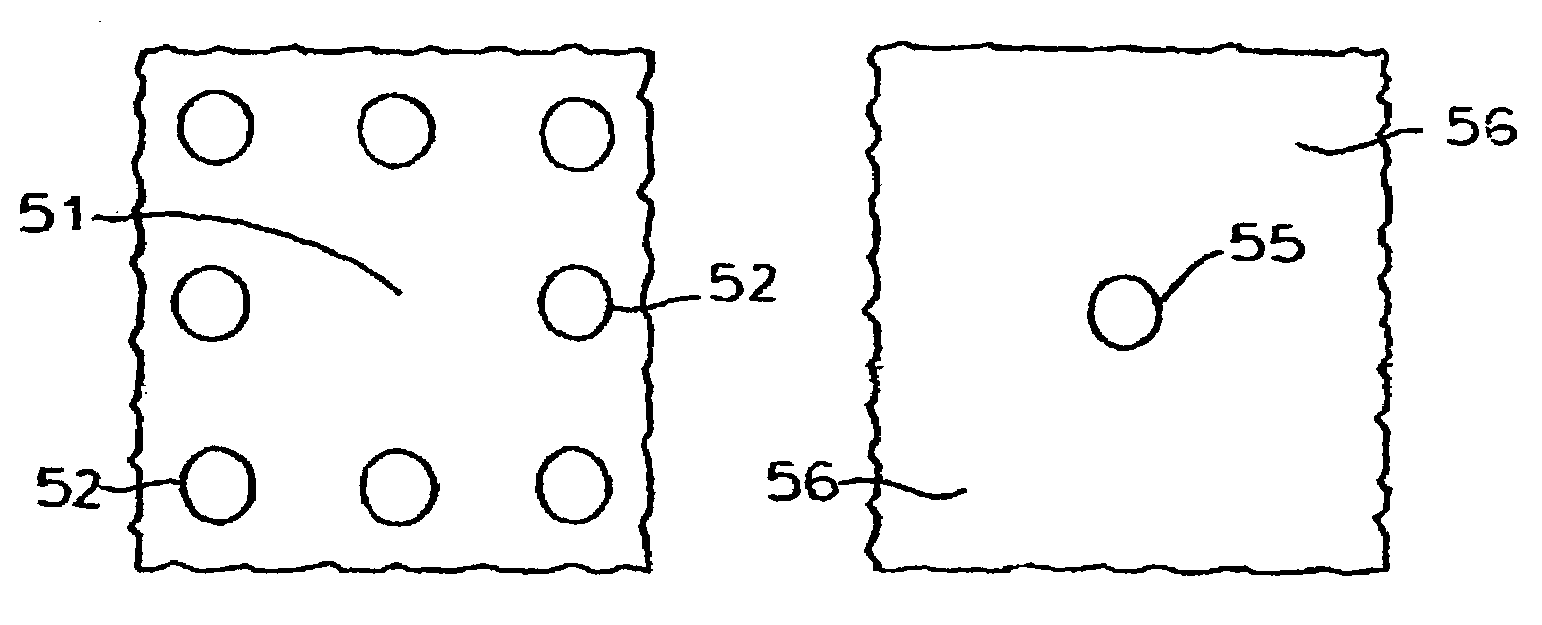Fluorescence validation microplate and method of use
a fluorescence microplate and reader technology, applied in the field of fluorescence microplate measurement, can solve the problems of incorrect fluorescence measurement, adverse alignment, affecting the reliability of their use, etc., and achieve the effect of tight toleran
- Summary
- Abstract
- Description
- Claims
- Application Information
AI Technical Summary
Benefits of technology
Problems solved by technology
Method used
Image
Examples
Embodiment Construction
[0038]Referring to the figures, FIG. 1 is a perspective view of an embodiment of the present invention. The validity plate 1, depicted is one for testing a standard 96 position fluorometer. It consists of a top plate 2 and bottom plate 3 connected in alignment with bolts 4. The top 10 of the validity plate 1 and bottom 11 are indicated as well, as left side 12 and right side 13 of validity plate 1 for orientation are indicated.
[0039]The validity plate 1 has wells 25, 22 which are of varying diameters and / or depths and are arranged such that a variety of test can be performed. Each well shown is fitted with a fluorophore. The validity plate 1 also has blanks 6 which are solid measurement positions on the validity plate 1 with no well (and thus no fluorophore). Each well 22, 25 and blank 6 corresponds to an optical reading device measurement position on the fluorometer. In an embodiment not shown, the blanks are simply empty wells with no fluorophore.
[0040]FIG. 2 is a top view of the ...
PUM
| Property | Measurement | Unit |
|---|---|---|
| wavelength range | aaaaa | aaaaa |
| wavelength range | aaaaa | aaaaa |
| diameter | aaaaa | aaaaa |
Abstract
Description
Claims
Application Information
 Login to View More
Login to View More - R&D
- Intellectual Property
- Life Sciences
- Materials
- Tech Scout
- Unparalleled Data Quality
- Higher Quality Content
- 60% Fewer Hallucinations
Browse by: Latest US Patents, China's latest patents, Technical Efficacy Thesaurus, Application Domain, Technology Topic, Popular Technical Reports.
© 2025 PatSnap. All rights reserved.Legal|Privacy policy|Modern Slavery Act Transparency Statement|Sitemap|About US| Contact US: help@patsnap.com



